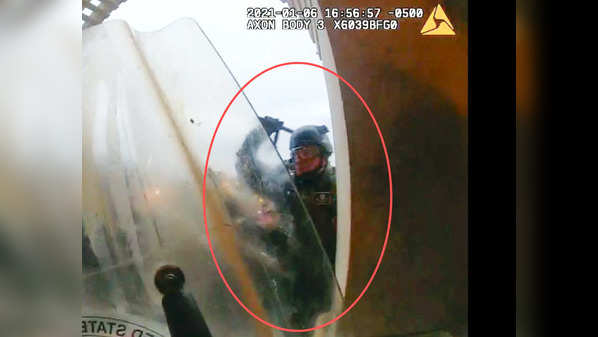Edward Richmond Jr. sentenced for Jan. 6 violence: A former soldier's fall from grace

20-Nov-2024 11:14 PM
Edward Richmond Jr., a former Army soldier with a history of violence, has been sentenced to over four years in prison for his role in the January 6 Capitol riot. Richmond, who was previously convicted of manslaughter for killing an Iraqi civilian, assaulted officers with a baton during the insurrection.
From Combat to Capitol: The Fall of a Soldier-Turned-Riotous Rebel Edward Richmond Jr .'s Violent Legacy: From Court-Martial to Capitol Chaos In a dramatic turn of events, Edward Richmond Jr.—a former Army soldier with a checkered past—was sentenced to more than four years in federal prison for his violent role in the January 6 Capitol insurrection . The case of Richmond, whose earlier conviction for shooting a handcuffed Iraqi civilian in 2004 resulted in a court-martial, highlights the dark intersections between military experience and extremist ideologies. Richmond, who assaulted law enforcement officers with a baton during the violent siege of the Capitol, was arrested in Louisiana after being identified online. Known on social media as "Buff Lightyear," Richmond was one of the more infamous faces of the Capitol attack, captured on video shouting threats while wielding a weapon. A Soldier's History of Violence: When Military Discipline Meets Riotous Rebellion Richmond's criminal past is far from a footnote—it's integral to understanding his trajectory toward the Capitol on January 6. Having been convicted of manslaughter for the cold-blooded killing of an Iraqi civilian in 2004, Richmond's return to violence during the insurrection seems almost inevitable. Despite serving time in military confinement and receiving a dishonorable discharge, he found himself emboldened by the rhetoric surrounding Trump ’s brand of nationalism. Prosecutors highlighted how Richmond, unfazed by his previous conviction, actively participated in the Capitol attack. His military training, combined with a disregard for law and order, made him a particularly dangerous actor that day. The baton assault was not just an act of rebellion but a manifestation of his deep-seated belief in the chaos he had been taught to fuel. Richmond’s sentencing comes at a time when former President Trump continues to cast January 6 participants as "warriors" and "patriots," emboldening them as symbols of resistance. As more than 1,500 rioters face prosecution, Trump's rhetoric has proven to be a double-edged sword—fueling political divisions while also offering a possible pathway to pardons should he return to office. For Richmond, this ideological alignment was clear. He wasn’t just fighting for a cause; he was fighting for a vision of America that championed brute force and unwavering loyalty to Trump’s authoritarian message. In sentencing Richmond to 51 months in federal prison, U.S. District Judge John D. Bates acknowledged the seriousness of his crime while factoring in his personal history. While the defense argued for a lighter sentence, citing Richmond's subsequent efforts to lead a "productive life" post-service, the nature of his offense weighed heavily on the court. This conviction, however, serves as part of a much larger narrative of justice unfolding across the country. From rioters facing lengthy prison terms to ongoing debates about pardons, Richmond’s story is a stark reminder of how deeply entrenched ideologies can drive violence—and how difficult it is to reckon with the aftermath. Richmond’s journey from a soldier in Iraq to a Capitol rioter is a testament to how personal histories and larger political currents can intertwine. His story is not just about one man’s descent into violence but about the broader forces at play in a polarized America, where loyalty to ideology sometimes outweighs loyalty to country and law. As more rioters face the consequences of their actions, the question remains: can America heal from the deep rifts created by January 6, or will it continue to cultivate a culture of division that breeds more chaos? Richmond's case is one more piece of the puzzle, but it’s far from the last.